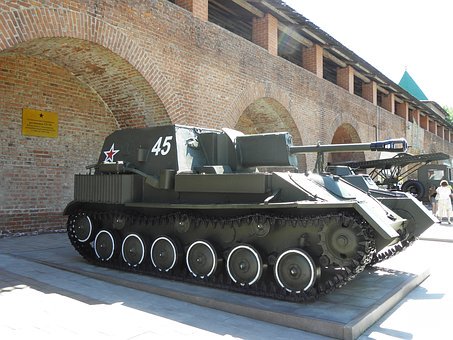
篇1:高中英语时态全方位分析与应用指南
时态(Tense)是表示行为、动作和状况在各种时间条件下的动词形式。因此,当大家说时态结构的时候,指的是相应时态下的动词形式。 高中英语时态全方位分析与应用指南分为16种:一般目前、一般过去、一般以后、过去以后时,与这四者的进行时、完成时和完成进行时。
下面是16种时态的谓语动词形式和具体使用方法,高考考试必考的是前十个时态,同学们需要重点学会。
1.一般目前时 (do/does; is/am/are)
① 表示目前的状况、状况或特点。
例:He is a student.
他是一个学生。
② 表示常常性、习惯性动作。
例:He always helps others.
他一直帮助其他人。
③ 客观事实和常见真理。
例:The earth moves the sun.
地球绕着太阳转。
④ 表示一个按规定、计划或安排要发生的动作。
仅限于某些表示来、去、动 、停、开始、结束、继续等的动词,可以与表示将来时间的状语搭配用 。
容易见到的使用方法是:飞机、火车、轮船、汽车等按期定点运行的交通方法。
例:The next train leaves at 3 oclock this afternoon.
下一趟火车今天下午3点开车。
⑤ 在时间、条件和让步状语从句中常常用一般目前(有时也用目前完成时)表示将的来事情。(即:主将从现原则)
例:I will call you as soon as I arrive at the airport.
我一到机场就会给你打电话。
When you have finished the report, I will have waited for about 3 hours.
等你完成这份报告的时候,我就已经等了将近3个小时了。
2. 目前进行时
① 表示此时此刻正在发生的事情。
例:He is listning to the music now.
他目前正在听音乐。
② 表示现在一段时间内一直在做的事情,但未必此时此刻正在做。
例:I am studying computer this term.
这个学期我一直在学习计算机。
③ 目前进行时可以表示以后的意思。
a. 瞬时动词的进行肯定表以后。
例: I am leaving.
我要离开了。
b. 持续动词的进行只有有以后的时间状语或有以后语境中才表以后。
例: I am travelling next month.
下个月我要去旅游。
④ 目前进行时与频度副词连用,表示说话者或褒义或贬义的感情色彩。
例: He is always helping others.
他一直帮助其他人。(褒义)
3. 目前完成时
① 表示动作到目前为止已经完成或刚刚完成,强调对目前产生的影响。
例:I bought a new house, but I havent sold my old one yet, so at the moment I have two houses.
我买了一所新房屋,但还没卖掉旧的,所以目前我又两所房屋。
② 表示从过去某时刻开始,持续到目前的动作或状况,并且或许会继续延续下去。此时常常用延续性动词。
时间状语常用since加一个过去的时间点,或for加一段时间,或by加一个目前时间。
例:Great as Newton was, many of his ideas have been challenged today and are being modified by the work of scientists of our time.
虽然牛顿是个伟大的人物,但他的很多见解直至今还在遭到挑战,并且被现代科学家的工作所修正
4. 目前完成进行时
表示某一动作开始于过去某一时间,延续或重复地出现到今天,或将继续延续至以后。
例:We have been working on this project for over a month now.
到现在为止,大家一直在处置那个项目,已经花了一个多月时间了。
5. 一般过去时
① 表示过去某个时间发生的动作或状况。
例:I bought some fruits yesterday.
我昨天买了一些水果。
② 表示过去习惯性动作。
例:When I was a boy,I often swam in that river.
would/used to do:表示过去常常......
例:The old man would sit on a bench in the quiet park and look at others for hours without doing anything or talking to anybody.
老人过去常常坐在宁静的公园里的一条长椅上,看着其他的人,一坐就是数个小时,什么也不干,也不和其他人交谈。
He used to visit his mother once a week.
他以前一直每周看望一次他的妈妈。
6. 过去完成时
表示在过去的某个时间或动作以前已经发生的动作或已经存在的状况。就是大家常说的过去的过去。
Until then, his family hadnt heard from him for six months.
到那时为止,他家已经有六个月没得到他的消息了。
7. 过去以后时
表示从过去的某个时间看将要发生的事。
例:I said on Thursday I should see my friend the next day.
我星期四说我将于第二天拜访我的朋友。
8. 过去进行时
① 表示在过去具体的时间正在发生的动作。
例:Mary was listening to light music 10 minutes ago.
10分钟前,玛丽正在听轻音乐。
② 表示过去某个时间段内一直在发生的事情。
例:I was travelling in London last summer vacation.
去年暑假我在伦敦旅游。
③ 过去进行时可以表示过去以后的意思。
a. 瞬时动词的过去进行时肯定表示过去以后的意思。
例:Then she said she was leaving.
然后她说她要离开了。
b. 持续动词的过去进行时只有在有过去以后的时间状语或过去以后的语境下才能表示过去以后。
例:She said that she was travelling the next day.
她说她第二天要去旅游。
④ 过去进行时和频度副词连用可以表示说话者或褒义或贬义的感情色彩。
9. 一般以后时
(1)will do
① 表示主语主观意愿的以后。
例:I will send her a glass hand-made craft as her birthday gift.
我将送给她一个玻璃的手工制品,作为给她的过生日礼物。
② 表示客观以后。
例:Fish will die without water.
离开水,鱼会死。
③ 表示临时决定。
例:Mary has been ill for a week.
Oh,I didnt know. I will go and see her.
(2)am/is/are going to do
① 表示计划、计划做某事。
例:This is just what I am going to say.
这正是我想说的。
② 表示依据某种征兆看,非常可能或马上发生的事情,表推断。
例:Look at the dark clouds in the sky. Its going to rain.
看天上的乌云,要下雨了。
(3)am/is/are about to do
表示马上、正要时,可用。强调最近内或立刻要做的事。
例:Dont worry, I am about to make a close examination on you.
别担忧,我立刻就给你做一次仔细的检查。
(4)be to do
① 表示按计划、安排马上发生某事或计划做某事。
例:She is to be seen in the lab on Monday.
星期一你准会在实验室见到她。
② 该做或不该做的事情(语气上接近于should, must, ought to, have to),表示一种命令、规劝性语气。
例:You are to go to bed and keep quiet, kids. Our guests are arriving in less than 5 minutes.
孩子们,你们需要 上床睡觉,不准吵闹。大家的客人5分钟之内就要到了。
10. 以后进行时
表示在以后的某个具体时间正在发生的动作或事情。
例:Dont worry, you wont miss her. She will be wearing a red T-shirt and a white skirt at that time.
别担忧,你不会认不出她的。她到时会穿一件红色的T恤衫和一条白色的短裙。
11. 以后完成时
表示从以后的某一时间开始、延续到另一个以后时间的动作或状况,或是在某个以后时间完成,但对其后的另一个以后时间有影响的动作或状况。就好象把目前完成时平移到时间轴的以后时时段一样。
例:The conference will have lasted a full week by the time it ends.
会议从开始到结束将持续整整一个星期。
12. 以后完成进行时:
表示动作从某一时间开始一直延续到以后某一时间,是不是继续下去,应视上下文而定。
例:By the end of next month, the project will have been being worked for 3 years.
到下个月底为止,这项工程就已经不停地进行了3年了。
13. 过去完成进行时:had been doing
表示某一动作一直延续到过去某一时间,是不是继续下去,应视上下文而定。
例:The old clock had been being taken apart of and fixed up again for several times by my 10-year old son before I came back home.
我回到家之前,我10岁大的儿子已经把这个旧钟表拆卸并重新组装了好几回了。
14. 过去以后进行时:
表示就过去某一时间而言,以后某一时间或时间段正在进行的动作,主要用于从句中。
例:The government promised that a new highway would be being built next July.
政府承诺说第二年7月或有一条新的高速公路正在修建。
15. 过去以后完成时:
表示就过去某一时间而言,以后某一时间之前所完成的动作。常用在虚拟语气中,表示与过去事实相反。
例:I believed by the end of that year an advanced version of that software would have been developed, but I was wrong.
我坚信到那年年底为止,那个软件的新版本将被开发出来。但我错了。
16. 过去以后完成进行时:
表示就过去某一时间而言,以后某一时刻之前一直在进行的动作,是不是继续下去,应视上下文而定。
例:They said that by the end of the following month, the project would have been being worked for 3 years.
他们说到第二个月底为止,这项工程就已经不停地进行了3年了。
篇2:高中英语时态全方位分析与应用指南
导语:中学习英语涉及到的时态一共有16种,下面给大伙筹备了一般目前时的使用方法说明,期望对大伙复习备考有帮助。
1、一般目前时表目前
1. 表示目前常常性或习惯性的动作。如:
My sister wears glasses. 我妹妹戴眼镜。
He often goes to the cinema. 他常常去看电影。
【注】询问某人的习惯时,有时还可用ever。如:
Do you ever eat meat? No, I never eat meat.你吃肉吗?从不吃肉。
2. 表示目前的状况或状况。如:
Mother is ill. 妈妈病了。
He is always like that. 他一直那样。
He likes living in the country. 他喜欢住在乡下。
We need a lot of money. 大家需要一大笔钱。
3. 表示目前的能力、特点、职业等。如:
He sings well. 他唱歌唱得好。
Mr. Smith teaches French. 史密斯先生教法语。
4. 表示客观真理、科学事实、格言与不受时间限制的客观存在。如:
Summer follows spring. 春去夏来。
Knowledge is power. 常识就是力量。
The earth turns around the sun. 地球绕着太阳转。
2、一般目前时表以后
1. 当主句为以后时态或表示以后意义时,时间和条件的状语从句需要用一般目前时表以后。如:
Ill write to her when I have time. 我有空会给她写信。
Turn off the lights before you leave. 走前关灯。
If we hurry, we may catch the bus. 假如快点走大家可能赶得上公共汽车。
Tell me in case you get into difficulty. 遇见困境请告诉我。
【注】① 除表示时间和条件的状语从句外,表示让步、相似、比率的从句也需要用一般目前时表示以后。如:
Ill follow him wherever he goes. 他到哪里,我就跟着到哪里。
Whatever you say, I wont pay. 无论你怎么说,我都不会付钱。
Whether we help him or not, he will fail. 无论大家帮他与否,他都会失败。
Ill have a good time whether I win or lose. 赢也好,输也好,我都将会玩好。
The more you eat, the fatter you will become. 你吃得越多就会越胖。
② 另外,当主句为用以后时态时,定语从句也一般用一般目前时表以后。如:
Ill give you anything you ask for. 你要什么我都给你。
You can have anything I find. 我找到的任何东西你都可以拿去。
Everyone who comes first will get a present. 每一个先来的人都可得到一份礼物。
2. 根据英语习惯,一个句子中若主要动词已经表明了所谈论动作的时间,那样与之有关的其他动词就不必第三指明同一时间,而总是用一个比较简单的时态,如用一般目前时表示一般以后时等。比较。如:
This discovery means that we will spend less on food.这一发现意味着大家将降低在食品上的花费。
This discovery will mean that we spend less on food. 这一发现意味着大家将降低在食品上的花费。
3. 在make sure,make certain,take care,be careful,mind,watch等后的that从句中一般也只用一般目前时表示以后意义。如:
Take care that it does not occur again. 注意不要再发生如此的事。
We must take care that no one sees us. 大家需要注意不要让人看见大家。
Make sure you come back soon. 你要保证快点回来。
Be careful that you dont hurt her feelings. 当心别伤了她的感情。
Watch that the baby doesnt go near the heater. 注意不要让孩子接近加热器。
Mind you read the examination questions carefully before you begin to answer them. 在答卷前应该注意仔细阅读考试试题。
【注】在it doesnt matter, I dont care, I dont mind 等结构后的名词性从句也一般用一般目前表示以后意义。如:
It doesnt matter where we go on holiday. 大家到哪里度假都行。
Does it matter who goes first? 哪个先去这有关系吗?
I dont care whether we win or lose. 我不在乎大家是赢还是输。
Dont you care what happens to them? 难道你不关心他们出啥事了?
4. 在I hope , I bet, see 等后的宾语从句中一般用一般目前时表示以后意义,但有时也可直接用以后时态。如:
I hope that you like [will like] it. 你期望你会喜欢它。
I bet it rains [will rain] tomorrow. 我打赌明天会下雨。
See that children dont catch cold. 当心不要让孩子感冒。
Ill see that nobody disturbs [will disturb] you. 我将确保没人打扰你。
【注】see 后的that从句一般用一般目前时表以后,直接用以后的情形较少见。
5. 在as, than 引出的比较状语从句中可用一般目前时表示以后,也可直接用以后时态。如:
Well get there as soon as you do [will]. 你一到,大家就到。
Well probably drive faster than you do [will]. 大家开车非常可能比你快。
6. 表示按规定、时间表、计划或安排要发生的动作。如:
Are you on duty next weekend? 下周末你上不上班?
The train leaves at 12:00. 火车12点开出。
Where do we go now? 大家目前到哪儿去?
【注】用于此使用方法时,句中一般有具体的时间状语。
7. 当主句为以后时态时,与之有关的by the time后接的从句要用一般目前时表示以后意义。如:
By the time he comes, I will have left. 等他到时,我会已离开了。
The film will have started by the time we get to the cinema.大家到电影院时电影会已经开始了。
8. 表示目前将要宣布某事。如:
I declare the meeting open. 我宣布会议开始。
We learn Lesson Ten today. 今天大家学习第10课。
9. 表示客观性非常强的以后。如:
Today is Friday, so tomorrow is Saturday. 今天是星期五,所以明天是星期六。
My birthday is on a Sunday this year. 我今年的过生日在星期天。
【注】有时说话者对某一以后事实很一定,也用一般目前时。如:
The future is bright. 前途是光明的。
Final victory is ours. 最后的胜利是大家的。
3、一般目前时表过去
1. 用于某些动词表示不确定的过去时间。如:
John tells me you will leave tomorrow. 约翰告诉我你明天离开。
I hear that he got married last month. 我听说他上个月结婚了。
Mary says you told her to come over here. 玛丽说是你让她到这儿来的。
2. 当要陈述一个客观事实时,有时即便有过去时间状语也可用一般目前时。如:
The story is set in the summer of 1937. 故事的背景是夏季。
The story begins in the year 1937. 故事开始于。
篇3:高中英语时态全方位分析与应用指南
导语:中学习英语涉及到的时态一共有16种,下面给大伙筹备了一般以后时使用方法说明,期望对大伙复习备考有帮助。
1. 一般以后时的概念
一般以后时表示在目前看来马上要发生的动作或存在的状况。常用时间副词tomorrow, soon或短语next year / week / month, in a few days, in the future, sometime 做状语。如:
What will you do this afternoon. 你今天下午做什么?
We will have a meeting tomorrow. 大家明天要开会。
He is going to study abroad next year. 明年他要出国学习。
2. 一般以后时的结构及应用
shall / will + 动词原形。表示马上发生的动作或存在的状况。尤其是表示客观性的事情或在某条件下要发生的事情,只可以用此结构。如:
What shall we do if he doesnt come? 假如他不来,大家该如何解决?
Will you be free this evening? 今天晚上有空吗?
I think he will tell us the truth. 我想他会告诉大家真实状况的。
be going to + 动词原形。表示已经计划或安排好了的事情,也可表示有迹象显示一定要发生的事情。如:
We are going to have a meeting to discuss the matter this evening. 今天晚上开会讨论这件事情。
Look at the black clouds over there. I think it is going to rain soon. 看一看那边的乌云,我想天要下雨了。
There is going to be an English evening this week. 本周要举行一个英语晚会。
be to + 动词原形。表示一种常规性的活动或注定要做的事情。如:
Who is to clean the classroom today? 今天该哪个打扫教室了?
When are you to return your library book? 你什么时间要还图书?
The bridge is to be completed by the end of this year. 这渡桥该在今年年底前完工。
be about to + 动词原形。表示就要做或正好要做的事情。总是暗含一种时间上的巧合,因此,句子不可以再用时间状语。如:
Dont leave. Li Lei is about to come. 不要走了,李蕾就要来了。
Be quiet. The concert is about to start. 安静下来,音乐演唱会就要开始了。
be +目前分词。表示马上发生的动作或存在的状况。这个句型中动词主如果瞬间动词:come, go, leave, arrive, begin, start, sTOP, close, open, die, join, borrow, buy等。如:
Go ahead, and Im coming. 走前面一点吧,我就来。
The dog is dying. 那条狗要去世了。
Hurry up. The shop is closing. 快点,商店就要关门了。
一般目前时。表示一种严格根据计划进行的动作。比如,上课、飞机起飞、火车离站等。如:
Dont hurry. The meeting starts at a quarter past eight. 不要匆忙,回忆八点过一刻开始。
The bus goes back at four thirty. 汽车四点返回。
篇4:高中英语时态全方位分析与应用指南
导语:中学习英语涉及到的时态一共有16种,下面给大伙筹备了一般过去时使用方法说明,期望对大伙复习备考有帮助。
1. 一般过去时的概念
一般过去时表示过去某一时候或某一段时间所发生了的事情或存在的状况。常与过去时间yesterday, this morning, just now, a moment ago, in May, last night / year / week, once upon a time, the other day, before , when clause, in the past连用。如:
What did you do yesterday? 昨天你干了什么?
I met Lin Tao this morning. 今天上午我会到了林涛。
I was there a moment ago. 刚刚我在那儿。
2. 一般过去时的应用
表示过去某时所发生的动作或存在的状况。如:
Liu Ying was in America last year. 刘英去年在美国。
Jim rang you just now. 吉姆刚刚给你打了电话。
表示过去常常或反复发生的动作。常接时间副词often, usually, always, sometimes, every day / week, etc. 如:
We often went out for a walk after supper. 大家过去常在晚饭后散步。
We usually played together. 大家一般一块玩。
3. 一般过去时对谓语动词的需要
一般过去时的谓语动词要用动词的过去式。动词过去式的构成分规则变化和不规则变化两种形式,不规则变化一般需要逐个记忆,规则变化则遵循以下原则:
一般在动词后加-ed。如:playplayed, offeroffered, weighweighed, destroy destroyed, signsigned.
在以字母e结尾的动词后,只加-d。如:likeliked, provideprovided, hate hated, datedated。
在以辅音字母+y结尾的动词后,则改y为i,再加ed。如:supplysupplied, flyflied, study studied.
在以单短元音的重读闭音节结尾且,末尾只有一个辅音字母的动词后,双写最后一个辅音字母,再加-ed。如:planplanned, referreferred, regretregretted, banbanned.
4. 特不要说明
有的动词的过去时,如:expect, hope, intend, plan, wanted 等一般过去时,后接不定式的完成时;或它们的过去完成时接不定式的一般式,都可表示过去未曾达成的意图、计划或期望。如:
I hoped to have been invited to his wedding party. I had hoped to be invited to his wedding ceremony. 我本期望他来邀请我参加他的结婚典礼。
I intended to have joined their games. I had intended to join their games. 我本计划参加他们的比赛。

篇5:高中英语时态全方位分析与应用指南
导语:中学习英语涉及到的时态一共有16种,下面给大伙筹备了过去以后时使用方法说明,期望对大伙复习备考有帮助。
1. 过去以后时的概念
过去以后时主要用于表示过去某个时候看来马上发生的动作或存在的状况。如:
He said he would come here next Friday. 他说他下周星期五来这儿。
I knew that he would help us when we were in trouble. 我了解当大家陷入困境时它会帮助大家。
2. 过去以后时的结构
would + 动词原形。如:
She told us that she would try her best to catch up with other classmates this term. 她告诉大家说她将所有努力在本期赶上其他同学们。
When you asked Li Lei for help, he would never refuse you. 过去当你请她帮忙时,他绝不会拒绝。
was / were going to + 动词原形。如:
He told us that he was going to attend the meeting. 他告诉我说他要参加那次会议。
He said that I was going to be sent to meet her at the railway station. 他说将要拍我去火车站接她
was / were to + 动词原形。如:
The building was to be completed next month. 这座建筑改在下个月竣工。
Li Lei was to arrive soon. 李蕾非常快就要到了。
was / were about to + 动词原形。如:
We were about to leave there when it began to rain heavily and suddenly. 就在大家要离开时,天忽然下起了大雨。
He was about to have lunch when the bell rang. 就在他要吃中饭的时候,门铃响起来了。
was / were +目前分词。如:
He was leaving the next day. 他第二天要走了。
We were informed that the leaders were coming to our school soon. 大家接到公告说领导们非常快要来大家学校。
3. 过去以后时的使用方法
过去以后时,一般用于主句为过去时的宾语从句中。如:
He said he would stay with us. 他说他要与大家呆在一块。
He said he would never go there again. 他说他绝不会再去那儿。
过去以后时,用于虚拟语气中,如:
If I were you, I would not do that. 如果我是你的话,我就不会那样做。
If he were here, he would show us how to do it. 假如他在这儿,他就会向大家展示该怎么样做了。
4. 拓展
was / were going to + 动词原形;was / were to + 动词原形;was / were about to + 动词原形等结构都可表达当时一种未曾达成的意图或计划。如:
The conference was going to be held the next month. 会议下个月开。
We were to have our class at eight. 八点大家该上课了。
I was about to tell him about it when Wu Dong got in. 就在我要告诉他时,吴东进去了。
篇6:高中英语时态全方位分析与应用指南
导语:中学习英语涉及到的时态一共有16种,下面给大伙筹备了过去进行时使用方法说明,期望对大伙复习备考有帮助。
1. 过去进行时的概念
过去进行时主要表示过去某一时刻正在进行的动作,或表示过去某一阶段一直在进行的动作。如:
I was having a talk with Li Hua at that time. 那时,我正在跟李华谈话。
I was watching TV at home last night. 昨晚我一直在看电视。
2. 过去进行时的结构
过去进行时由was / were + 目前分词构成。如:
I was doing my lessons then. 那时,我在做功课。
We were cleaning the house. 大家在打扫房屋。
3. 用过去进行时应注意的什么时间
过去进行时可表示按计划、安排过去某时刻将要发生的动作。如:
He said they were leaving for Beijing this afternoon. 他说他今天下午要去北京。
动词hope, wonder等的过去进行时常用来表示提出需要,虽然表示目前的内容,但语气比一般目前时或一般过去时要委婉。如:
I was wondering whether you could come to join us. 我想你能否过来跟大家一块活动?
过去进行时中有always, forever, continually, constantly修饰时,表示说话人的赞赏或厌烦的感情。如:
He was always thinking of others. 他一直想到人家。
4. 过去进行时与一般过去时有什么区别
过去进行时强调动作在过去某时刻正在进行或持续,而一般过去时表示动作的完成。如:
He was writing his composition last night. 他昨晚在写作文。
He wrote his composition last night. 他昨晚写了一篇作文。
表示过去的状况、感觉及心理活动的静态动词可用于一般过去时,但一般不需要于进行时。如:
I hated it when a man spoke with his mouth full of food. 我讨厌大家说话时口里含着食物。
一般过去时与always, constantly, forever, continually等连用,表示过去常常性、习惯性的动作;而过去进行时与always, constantly, forever, continually等连用,表示动作的重复,常带有感情的色彩。如:
He always got up at six. 他过去一直六点起床。
He was always thinking of his work. 他一直一心想到工作。
有时过去进行时可以用来替换一般过去时,但一般过去时表示主语的行为是经过认真考虑的;而过去进行时表示一种较随意或没进行仔细考虑的行为。如:
I thought that he would agree with us. 我原以为它会赞同大家的。
I was thinking of persuading him to follow my advice. 我想到了要说服他同意大家的建议。
篇7:高中英语时态全方位分析与应用指南
导语:中学习英语涉及到的时态一共有16种,下面给大伙筹备了目前完成时使用方法说明,期望对大伙复习备考有帮助。
1. 目前完成时的概念
目前完成时既可表示过去发生的动作对目前所导致的结果或影响,也可表示动作从过去某时间开始,一直持续到目前,并且还大概持续下去。如:
I have just finished my work. 我把工作做完。
Have you ever been to Beijing? 你过去去过北京吗?
I have lived for ten years. 我在这儿住了十年了。
We have studied here since . 大家自来就在这儿念书了。
2. 目前完成时的结构
目前完成时由have / has + 过去分词构成。
3. 目前完成时的应用
非持续性动词go, come, leave, borrow, buy, die, join的完成时的一定式不可以与时间段连用,若要接用时间段状语,则应换成相应的持续动词或状况动词。如:
He has left. 他走了。
He has been away for an hour. 他走了一个小时了。
Can I borrow that book? 我可以借那本书吗?
How long can I keep the book? 这本书我可借多长时间?
注意:非持续性动词的否定完成时可与时间段状语连用。如:
He has not borrowed the book since then. 从此将来,他再也没借这本书了。
have / has been to 表示过去去过某地,但目前不在那儿;have / has gone to表示目前已去某地,目前不在这儿。如:
He has been to Canada, but now he is working in our company. 他去过加拿大,目前在大家公司工作。
Mr. Li is not at home. He has gone to Shanghai. 李先生不在家,他去上海了。
完成时的一定式常用already,而否定式和疑问句常用yet,但若already用于疑问句时,表示一种出乎意料之外的惊讶。如:
Have you read it already? 你就看完了?
4. 目前完成时与其他时态有什么区别
目前完成时与一般过去时有什么区别:目前完成时强调动作的结果或对目前的影响,是目前时的范畴;一般过去时强调动作所发生的时间,是过去时的范畴。因此,过去时需跟过去时间连用或有表过去时间的上下文连用,而目前完成时不可以与过去时间连用。如:
I read the book two weeks ago. 我两周前读了这本书。
I have read the book for two weeks. 这本书我读过两周了。
目前完成时与目前进行时:目前完成时强调动作持续到目前或刚结束;而目前进行时只强调现在的状况。如:
They have talked for about two hours. 他们谈了大约两个小时。
They are talking. 他们在谈话。
篇8:高中英语时态全方位分析与应用指南
导语:中学习英语涉及到的时态一共有16种,下面给大伙筹备了过去完成时使用方法说明,期望对大伙复习备考有帮助。
1. 过去完成时的概念
过去完成时既可表示过去某个时间或动作之前所发生的事情,也可表示过去某个时间或动作之前所发生的动作一直持续到过去某个时间。如:
When I got to the station, the train had left. 当我到达车站时,火车已经开走了。
We had learnt fifteen lessons by last week. 到上周为止,大家学完了十五篇课文。
He had stayed here for two days before he left. 他走之前在这儿呆了两天。
He said that he had lived there since he was ten. 他说他十岁起就住在那儿了。
2. 过去完成时的结构
过去完成时由had + 过去分词构成。
3. 过去完成时的应用
与过去完成时连用的时间状语可以多种多样,用它的主要依据是看其是不是发生在过去的过去。如:
He had learnt some English before I went here. 在来这儿之前我学过一些英语。
He had written three stories by last year. 到去年他已经写了三篇故事。
We had cleaned the room when he got there. 当他到那儿时,大家已经把房屋弄干净了。
He went there after he had finished his work. 他把事做完之后,就到哪里了。
注意:当主句跟由before, after, as soon as所引导的时间从句的动作连接非常紧密时,从句也可用一般过去时。
He went there after he read the letter. 他看了那封信后就去那儿了。
过去完成时还常常用于主句为过去时的宾语从句中。如:
He said he had been a soldier. 他说他当过兵。
They said they had seen the film. 他们说这幕电影他们看过。
在hardly / scarcely when, no soonerthan 两个结构中的主句一般要用过去完成时。如:
Hardly had I told her the news when she began to cry out. 她一听到这一消息就大哭了起来。
Scarcely had he finished his supper when he went out. 他已吃完晚饭就出去了。
No sooner had he fallen asleep than he lay down on the bed. 他一躺倒床上就睡着了。
动词expect, hope, suppose, think, want等的过去完成时可用来表示未达成的计划、计划或期望。如:
I had hoped to see you. 我本期望来看你。
He had wanted to buy a house in Beijing. 他本想在北京买栋房屋。
4. 过去完成时与一般过去时
过去完成时表示以过去某时间为起点以前所发生的动作或存在的状况,即:过去完成时强调过去的过去,而一般过去时只表示以目前时间为起点以前所发生的事情或存在的状况。如:
He studied there two years ago. 他在那儿学习了两年。
He said he had studied there two years ago. 他说他在那儿学习了两年。
表示过去某个时间以前所连续发生的两个或两个以上的动作时,一般用and, then, but根据动作的先后顺序连接,此时一般用一般过去时而不需要过去完成时。如:
He said he went the shop and bought some food. 他说他去商店买了一些食品。

篇9:高中英语时态全方位分析与应用指南
导语:中学习英语涉及到的时态一共有16种,下面给大伙筹备了过去以后完成进行时使用方法说明,期望对大伙复习备考有帮助。
1. 以后进行时的基本使用方法
以后进行时表示以后某一时间正在进行的动作:
Dont phone me between 5 and 6. Well be having dinner then. 五点至六点之间不要给我打电话,那时大家在吃饭。
When I get home, my wife will probably be watching television. 当我到家时,我太太可能正在看电视。
2. 表示按计划或安排要发生的动作
I will be seeing you next week. 我下个星期来看你。
Ill be taking my holidays soon. 不久我将度假了。
We shall be going to London next week. 下周大家要去伦敦。
3. 以后进行时表示委婉语气
有时用以后进行时可使语气更委婉:
Will you be having some tea? 喝点茶吧。
Will you be needing anything else? 你还需要什么吗?
4. 以后进行时与一般以后时有什么区别
两者基本使用方法不同:以后进行时表示以后某时正在进行的动作,一般以后时表示以后某时将要发生的动作:
What will you be doing this time tomorrow? 明天这时你会在干什么呢?
What will you do tomorrow? 你明天做什么?
两者均可表示以后,但用以后进行时语气更委婉,比较:
When will you finish these letters? 你什么什候处置完这类信件?
When will you be seeing Mr White? 你什么时间见怀特先生?
When will you pay back the money? 你什么时间还钱?
When will you be paying back the money? 这钱你什么时间还呢?
有时一般以后中的will含有想的意思,而用以后进行时则只不过单纯地谈将来状况:
Mary wont pay this bill. 玛丽不愿付这笔钱。
Mary wont be paying this bill. 不会由玛丽来付钱。
篇10:高中英语时态全方位分析与应用指南
导语:中学习英语涉及到的时态一共有16种,下面给大伙筹备了以后完成时使用方法说明,期望对大伙复习备考有帮助。
1. 以后完成时的基本使用方法
表示到以后某个时间为止必然会完成或预计要完成的动作,由will [shall]+have+过去分词构成:
He will have arrived by now. 他目前应当已经到了。
He will have gone back to England.他想来回英国去了。
When we get there,shell have gone to work. 大家到那里时她会已上班去了。
On Monday hell have been in Britain for three years. 到星期一,他在英国就满三年了。
2. 目前完成时、过去完成时与以后完成有什么区别
目前完成时以目前时间为参照点,表示在目前以前完成的动作或持续到目前的状况,过去完成时则以过去时间为参照点,表示在过去某一时间以前发生的动作或持续到过去某一时间的状况,以后完成时则以以后时间为参照点,表示在以后某一时间为止已经完成的动作或持续到以后某一时间的状况:
He has finished writing his novel. 他已写完了他的小说。
He had finished writing his novel by the end of last year. 去年年底他就写完他的小说。
He will have finished writing his novel by the end of next year. 到明年年底他就会写完他的小说了。
与一般目前年代替一般以后时一样,在表示时间或者条件的状语从句,一般要用目前完成时来表示以后完成时,而不可以直接用以后完成时:
I will go with you when I have finished my work. 等我完成工作之后我就同你去。
若不强调动作的完成,有时也可用一般目前时:
I will go with you when I finish my work. 我完成工作后就同你去。
篇11:高中英语时态全方位分析与应用指南
导语:中学习英语涉及到的时态一共有16种,下面给大伙筹备了过去以后进行时使用方法说明,期望对大伙复习备考有帮助。
过去以后进行时表示在过去以后某一时间正在发生的动作。它常和表过去以后的时间状语连用,但上下文了解时,时间状语亦可省略。和以后进行时一样,它也常表计划中的事,不表意愿或计划。
■过去以后进行时有一个特征,就常用在宾语从句中。如:
I thought youd be sleeping. 我以为你在睡觉哩。
She said she would be looking after you. 她说她会照顾你的。
He didnt know when hed be seeing us again. 他不了解什么时间他会再见到们。
I asked her what she would be doing on Saturday. 我问她星期六做什么。
They moved to the main entrance where the car would be waiting. 他们向大门走去,那辆车会在那里等着。
■过去以后进行时有时也可用在其他从句中,如:
The new name he would be using was Jack Jones. 他将用的新名是杰克?琼斯。
He would pay the rest as he would be leaving France. 其余款项,他将在离开法国时付清。
■过去以后进行时也可用在独立句中,如:
Jack said he had found a job. He would be working as a bartender in Detroit. 杰克说他找到了工作。他将在底特律做夜店间伙计。
I was excited. Next Wednesday we would be flying to Sydney. 我非常开心。下星期三大家就会飞往悉尼了。
■注意:过去以后进行时都没被动语态。
篇12:高中英语时态全方位分析与应用指南
导语:中学习英语涉及到的时态一共有16种,下面给大伙筹备了过去以后完成时使用方法说明,期望对大伙复习备考有帮助。
1、构成办法
过去以后完成时由would+have+过去分词构成。
2、使用方法及用例
过去以后完成时表示在过去看来以后某时会已经完成的动作:
She said shed have finished her exams by then. 她说那时她会已经考完试了。
I thought Sophia would have told you something. 我想索菲娅会已对你说一地状况。
I thought you would have finished by now. 我想你目前肯定已经干完了。
There are a lot of things I should have liked to ask you. 有好些事我本想问你的。
He knew by the time he arrived she would have gone home. 他了解他到时她会已经回家了。
Well, well! Who would have guessed it! 真是的! 这哪个会想到呀!

篇13:高中英语时态全方位分析与应用指南
导语:中学习英语涉及到的时态一共有16种,下面给大伙筹备了过去完成进行时使用方法说明,期望对大伙复习备考有帮助。
1、结构形式
过去完成进行时由had been+目前分词构成,因此无人称变化。
2、使用方法总结
1.过去完成进行时表示持续到过去某时的一个动作:
The ground was wet. It had been raining. 地是湿的。此前一直在下雨。
At last the bus came. I had been waiting for half an hour. 最后公共汽车来了,我已等了半小时。
She was out of breath. She had been running. 她气喘吁吁,她一直在跑来着。
He gave up smoking last year. Hed been smoking for twenty years. 去年他戒烟了。他吸烟已经二十年。
2.过去时间可用一个时间状语表示:
When I first met her, she had been working in the company for ten years. 我首次见到她时,她在那家公司已工作十年了。
I had not been waiting long when a taxi drew up. 我没等多长时间就来了一辆出租车。
She had been looking at the parcel for some time before she realized that it was for her mother. 这包裹她看了好一会儿才了解这是寄给她妈的。
Until/Up till then she had been living with her daughter. 到那时为止她一直和她女儿一块住。
3.但在更多状况下过去时间由另一句子表示出来,毋需加上时间状语:
Her eyes were red. It was obvious she had been crying. 她双眼红红的,显然她是哭了。
Jane was annoyed. Peter had been phoning her every night. 简非常不开心。彼得一直每晚给打电话。
He was very tired. He had been working all day. 他非常累。他干了一整天活。
She couldnt understand him. She hadnt been learning English long. 她不懂他的话。她学语的时间还不长。
I woke upI had been having a bad dream. 我醒了,我做了个恶梦。
She was very tired. She had been typing letters all day. 她非常累了。她整天都在打信件。
Her eyes were red. It was obvious she had been crying. 她的双眼红了,显然她刚哭过。
We had been doing business with each other for years before we quarrelled. 在吵翻之前,大家多年来在业务上一直来往。
When I first met Ann, she had been working for Exxon for 15 years. 我首次遇见安的时候,她已在埃克森公司干了了。
Jenny was annoyed. Jim had been phoning her every night for a whole week. 詹妮生气了。整整一星期,吉姆每天晚上都给她打电话。
4.有时上下文可说明是谈过去的事,因此无需时间状语:
She had been watching TV all day. 她看了一天的电视。
I had been reading your book. 我一直在看你写的书。
The rain had been pouring all night. 倾盆大雨下了一整夜。
We had been travelling in many countries. 大家一直在很多国家旅游。
5.这个时态也可用在某些从句中,这个时候从句的动作发生在主句的动作之前而对其有影响:
I heard youd been looking for me. 我听说你一直在找我。
That was just the letter I had been expecting. 这正是我一直期待的信。
That was exactly what we had been trying to do. 这正是大家一直想做的事。
I wanted to know what had been going on. 我想了解一直在发生啥事。
The drive increased the fatigue she had been feeling. 开车增加了她一直感到疲惫感觉。
They said that they had been fighting for their rights all these years. 他们说这类年来他们一直在为他们的权利而斗争。
3、特别补充
1.凡不可以用于进行时的动词均不可以有这种时态,但动词want 除外。如:
The boy was delighted with his new knife. He had been wanting one for a long time. 男生对新小刀非常高兴。他早就想要一把了。
2.过去完成进行时没被动语态。
篇14:高中英语时态全方位分析与应用指南
导语:中学习英语涉及到的时态一共有16种,下面给大伙筹备了以后完成进行时使用方法说明,期望对大伙复习备考有帮助。
1、结构形式
过去完成进行时由will / shall have been+目前分词构成。
2、使用方法总结
使用方法1、表示动作从某一时间开始一直延续到以后某一时间,至于是不是继续下去,要视上下文而定。如:
She will have been having treatment all her life. 她将终生遭到治疗。
By the end of next month he will have been here for ten years. 到下月底,他在这儿就够十年了。
By this time next year, we will have been doing business with each other for 20 years. 到明年这个时候,大家的业务住来就满了。
By the end of this year hell have been acting for thirty years. 到今年年底他做演员就满了。
使用方法2、表示一种常常性反复进行的持续性动作。如:
By the end of this month he will have been training horses for twenty years. 到了这个月底他驯马就满了。
By the end of this month he will have been climbing mountains for twenty years. 到了这个月底他登山就满了。






